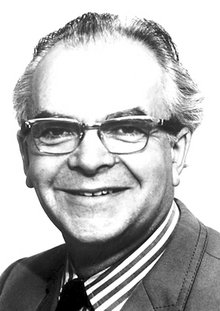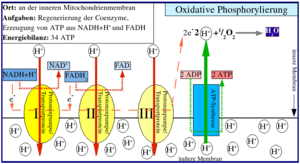Peter D. Mitchell facts for kids
Quick facts for kids
Peter Mitchell
|
|
|---|---|
 |
|
| Born |
Peter Dennis Mitchell
29 September 1920 |
| Died | 10 April 1992 (aged 71) |
| Nationality | British |
| Alma mater | University of Cambridge (BA, MA, PhD) |
| Known for | discovery of the mechanism of ATP synthesis |
| Awards |
|
| Scientific career | |
| Fields | Biochemistry |
| Institutions |
|
| Thesis | The rates of synthesis and proportions by weight of the nucleic acid components of a Micrococcus during growth in normal and in penicillin containing media with reference to the bactericidal action of penicillin (1950) |
| Signature | |
Peter Dennis Mitchell (born September 29, 1920 – died April 10, 1992) was a British biochemist. He won the 1978 Nobel Prize in Chemistry. He received this award for his important idea about how cells make energy. This idea is called the chemiosmotic theory. It explains how a molecule called ATP is created. ATP is like the energy currency of all living things.
Contents
Early Life and Education
Peter Mitchell was born in Mitcham, Surrey, England. This was on September 29, 1920. He went to school at Queen's College, Taunton. Later, he studied at Jesus College, Cambridge. There, he focused on Biochemistry, which is the study of the chemistry of living things.
In 1942, he started doing research at Cambridge. He earned his Ph.D. degree in 1951. His early work looked at how the medicine penicillin works.
Career and Research Discoveries
In 1955, Peter Mitchell was asked to start a new research group. This group was called the Chemical Biology Unit. It was part of the University of Edinburgh. He became a senior lecturer there in 1961. However, he faced some challenges and also had health issues. Because of this, he left the university in 1963.
After leaving Edinburgh, he moved to Cornwall. There, he worked on restoring an old house called Glynn House. He turned a big part of it into a research laboratory. In 1965, he and his colleague, Jennifer Moyle, started a non-profit company. It was called Glynn Research Ltd. Their goal was to do basic biological research at Glynn House. They began studying how cells create energy.
Understanding Cell Energy
In the 1960s, scientists knew that ATP was vital for life. It provides energy for almost everything cells do. But they didn't fully understand how ATP was made. Many thought it happened through a process called substrate-level phosphorylation.
Peter Mitchell came up with a new idea. He called it the chemiosmotic hypothesis. He suggested that ATP is made using the movement of tiny charged particles called ions. These ions move across a cell's membrane. This movement creates an "electrochemical potential difference." Think of it like a tiny battery inside the cell. This "battery" provides the energy needed to make ATP.
Mitchell's idea was based on things scientists already knew. Cells have a small electrical charge difference across their membranes. Also, substances naturally move from areas of high concentration to low concentration. He showed that ATP production was connected to this electrical and chemical difference.
His idea was later proven correct. Scientists found a special protein called ATP synthase. This protein sits in the cell membrane. It uses the energy from the ion movement to create ATP. Another scientist, André Tridon Jagendorf, also showed this process in plant cells. He found that a difference in acidity (pH) across a membrane in plant chloroplasts led to ATP being made.
Protonmotive Q-cycle
Later, Peter Mitchell also helped explain more details about how cells move electrons. He suggested how the pumping of protons (tiny parts of atoms) is linked to other chemical reactions. This process helps create the "proton motive force." This force is what powers the making of ATP.
Awards and Recognition
Peter Mitchell's groundbreaking work earned him many honors. In 1974, he became a Fellow of the Royal Society (FRS). This is a very respected scientific group.
In 1978, he received the Nobel Prize in Chemistry. He was awarded it for his "contribution to the understanding of biological energy transfer." This was specifically for his chemiosmotic theory.
See also
 In Spanish: Peter Dennis Mitchell para niños
In Spanish: Peter Dennis Mitchell para niños


